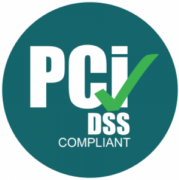Secrets Management Definition
What Is Secrets Management?
Secrets management involves securely storing and managing sensitive data, which includes passwords, keys, APIs, tokens, and certificates. These secrets authenticate users or machines, thereby enabling access to applications and services.
Confidential data must always be protected. Specifically, secrets facilitate digital authentication for privileged users who access critical internal data and sensitive applications.
The process of secrets management is crucial; it ensures the secure storage of sensitive information such as passwords and tokens. Moreover, this management is vital for sustaining business operations.
Furthermore, secrets are essential for many key activities, such as authenticating users and managing licenses. Proven tools and methods are employed in secrets management to guarantee the safe storage, access, and lifecycle management of digital secrets.
Read more: Essential Guide to Secrets Management
Why Is Secrets Management Important?
Users need to use authentication methods to access sensitive information or company resources. Whenever these secrets or credentials are transmitted across the company, there is a risk of data leakage or lost passwords. Because of this risk, there is a critical need for organizations to protect secrets.
What Are the Types of Secrets?
The six most common secrets
- Passwords – Credentials used by users or applications to securely access systems or information.
- API Keys – A unique identifier used to provide a secret token for authentication.
- SSH Keys – Access credentials that are used within the secure shell (SSH) protocol.
- Private Certificates – Self-hosted certificates used within an organization.
- Tokens – A value, such as a randomly generated number, assigned to sensitive data in order to hide its actual content.
- Encryption Keys – Strings of bits that are used by cryptographic algorithms to encrypt or decrypt data.
Securing secrets is essential to the overall security of any business. Consequently, IT groups often utilize secrets management tools in their DevOps environments to enhance this security.
What Are Secrets Management Tools?
Maintaining your own server architecture for secrets management can be costly and complex. Instead, adopting a SaaS-based solution like Akeyless Secrets Management Vault can provide a more efficient and cost-effective alternative. These SaaS tools offer robust security and seamless integration, thereby facilitating easier and safer access to your digital secrets.
Specifically, Akeyless operates on a vaultless technology that distributes secrets across multiple secure locations rather than storing them in a single vault. This approach enhances security by reducing the risk of a single point of failure and making it more difficult for unauthorized users to access sensitive information.

Checklist for Choosing the Best Secrets Management Tool
When selecting the best secrets management tool for your organization, considering a comprehensive checklist can guide you towards making an informed decision. Here’s a checklist to help evaluate the options:
- Security Standards
- Uses strong encryption for storing secrets.
- Offers secure secret generation and rotation capabilities.
- Provides detailed access controls and policies.
- Integration with Existing Infrastructure
- Supports integration with your cloud providers (AWS, Azure, GCP, etc.).
- Seamlessly integrates with your CI/CD pipelines and DevOps tools.
- Offers SDKs or APIs for custom integration needs.
- Multi-Cloud and Hybrid Support
- Facilitates management of secrets across multiple cloud environments.
- Supports hybrid setups combining on-premises and cloud resources.
- Enables consistent secret management practices across all environments.
- Ease of Use and Management
- Provides a user-friendly interface for managing secrets.
- Offers automation capabilities for secret rotation and management.
- Includes comprehensive documentation and community support.
- Compliance and Auditing
- Meets relevant compliance requirements for your industry (e.g., GDPR, HIPAA, SOC 2).
- Offers detailed audit logs for all secret access and changes.
- Allows for easy reporting and monitoring of secret usage.
- Scalability and Performance
- Scales with your organization’s growth and secret management needs.
- Maintains high performance even as the number of secrets and access requests grow.
- Offers high availability and redundancy features.
- Cost and Licensing
- Provides clear and predictable pricing models.
- Offers a cost-effective solution without compromising on features.
- Includes all required features in the base price without hidden costs.
- Vendor Reputation and Support
- Has a strong reputation for reliability and customer satisfaction.
- Offers responsive and knowledgeable technical support.
- Provides ongoing updates and security patches.
Secrets Management Tool Evaluation
This checklist serves as a starting point for evaluating secrets management tools. Additionally, each organization’s specific needs may require further considerations. Moreover, it’s beneficial to conduct a trial or pilot project with the shortlisted tools. This approach helps determine how well they integrate into your existing workflows and meet your security requirements.
Download Choosing the Best Secrets Management Tool for Your Enterprise eBook.
What Are the Challenges of Secrets Management?
DevSecOps and IT are complicated fields. The many types of secrets you have to control makes transmitting and storing them difficult. Keeping up a secure secrets store comes with many challenges.
Eight of today’s top challenges to Secrets Managment:
With the proliferation of multi-cloud and microservices, organizations manage hundreds or even thousands of secrets for developer access. Sharing these secrets, leaving them in code, or simply keeping them unrevealed can expose your organization to a breach. Consequently, maintaining strict control and secure management practices is crucial to safeguard your data.
Fragmented control
In many companies, individual departments and teams handle their own secrets separately from others. The result is a decentralized platform for secrets management, which can lead to security gaps and challenges when it comes to auditing.
Remote access
With the increasing trend of remote work, employees need remote access authorization. How do you ensure secure secret transfer?
Manual Sharing and Failure to Rotate Sensitive Data
Automating the rotation of secrets and employing secret management tools can mitigate the risks associated with manual sharing and static passwords.
Hardcoded Credentials
Removing hardcoded credentials from scripts and configurations and replacing them with dynamic secret retrieval methods enhances security.
Lack of Awareness and Visibility
Implementing centralized secret management solutions provides the necessary visibility and control over secrets across the organization.
Cloud Computing Privileges
A comprehensive approach to secret management is necessary for managing cloud computing privileges, ensuring secure management of secrets for each virtual machine instance.
DevOps Solutions
In DevOps environments, the integration of secret management practices into the CI/CD pipeline is crucial for securing automated processes.
What Are Secrets Management Best Practices?
Manually managing secrets introduces human error and can be inefficient. Initially, start with a password management tool. Furthermore, for large organizations, consider a holistic approach. Additionally, some tools handle various secrets beyond standard user accounts, expanding their utility.
Other secrets management best practices include:
- General password strategies. Employee passwords are often a weak point in the security of a business. Encourage passwords with high enough length and complexity. Change passwords regularly, especially for sensitive accounts. Avoid common and easily guessed passwords.
- Centralized management. Having all your secrets in one place for your IT department to manage is the best way to avoid leaks and mitigate risks.
- Privileged session monitoring. Software that helps manage a secrets can also effectively integrate with privileged access management (PAM) platforms. This adds an extra layer of security and restricts access to only the users who require it. DevOps teams should be able to monitor privileged user activity and terminate sessions if necessary.
- Threat analytics. An effect of centralized secret management is the ability to analyze your secrets easily. Finding and reporting on risks is faster and more comprehensive this way.
Learn how to Manage Secrets
Check out some of our tutorials today.
- Creating and Updating a Static Secret
- Sharing a Static Secret
- Akeyless Password Manager
- Creating and Configuring Targets
- Creating and Configuring Linked Targets
- Creating and Using Dynamic Secrets
- Creating and Using Rotated Secrets
- Universal Secrets Connector – Managing Secrets in AWS, GCP, K8s, and more
A Closer Look at Akeyless Secrets Management
Akeyless isn’t just another name in the game; it’s pioneering a vaultless approach to keeping your digital secrets safe. Consequently, instead of storing all your sensitive info in one spot, Akeyless spreads it out. This method makes it tougher for unwanted guests to access your data. Essentially, it’s like having multiple safe boxes scattered around, each holding a piece of the puzzle. Therefore, for businesses navigating the cloud, Akeyless offers a seamless way to manage access keys, passwords, and certificates without worrying about security breaches.









